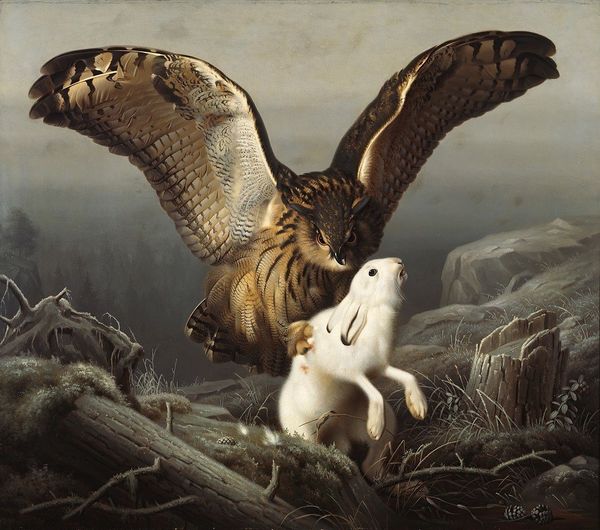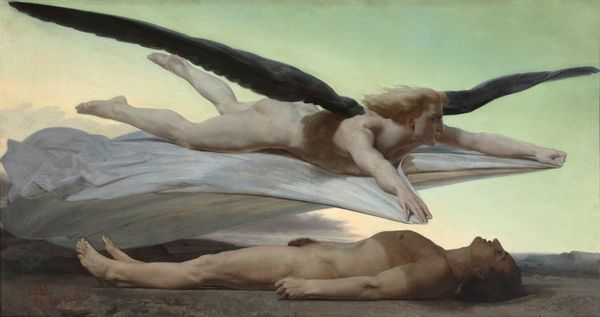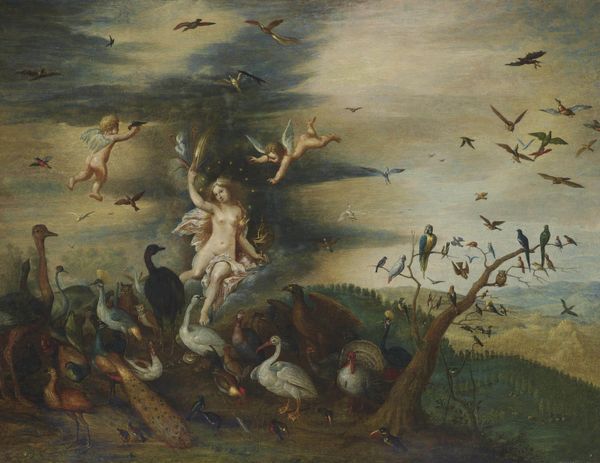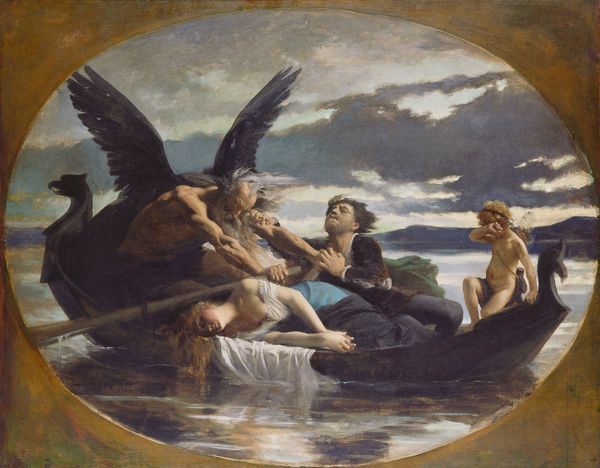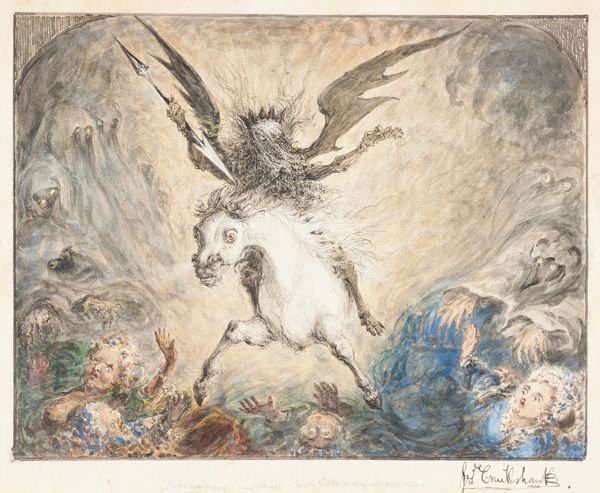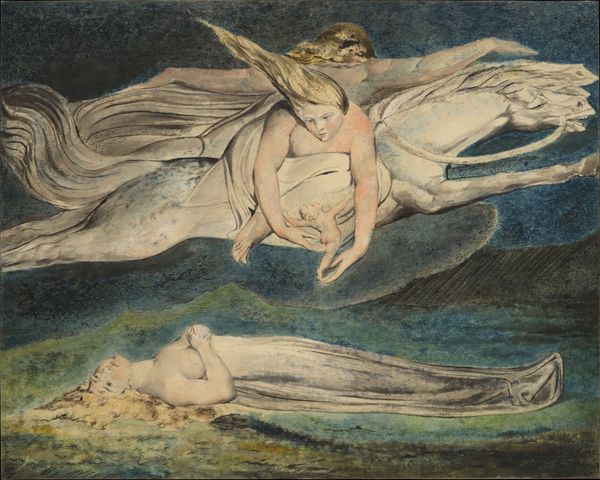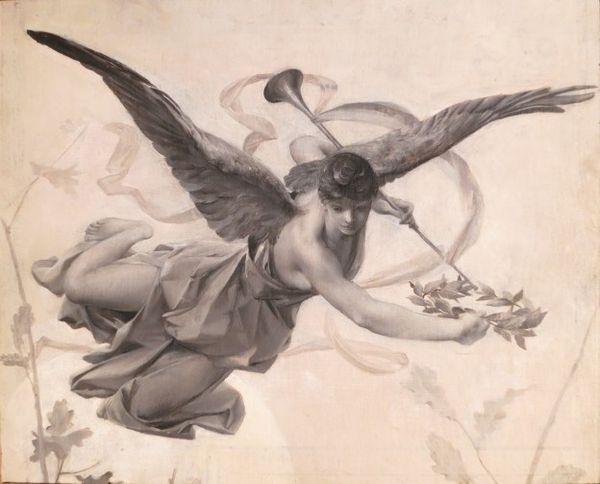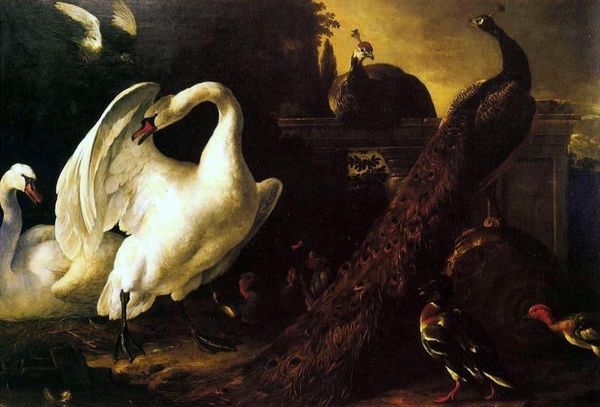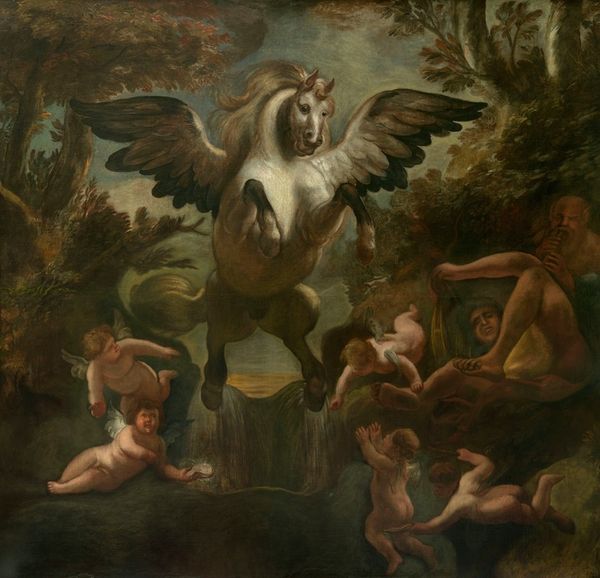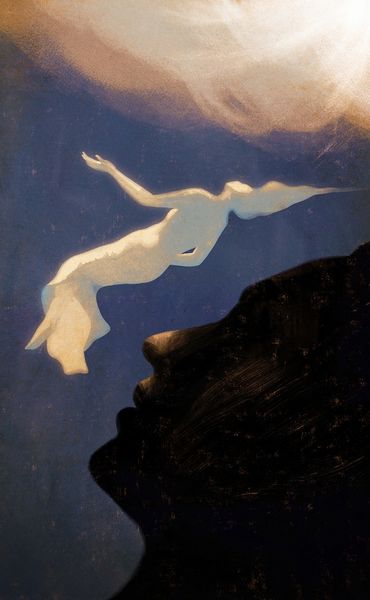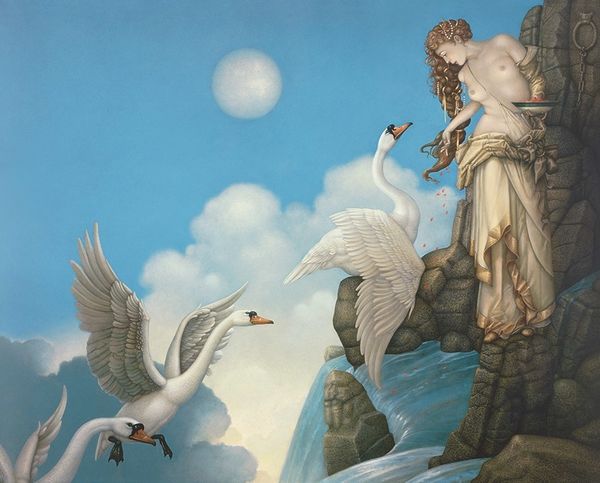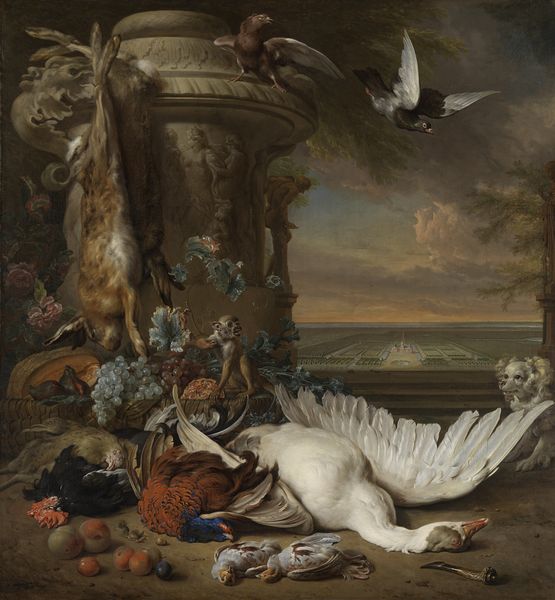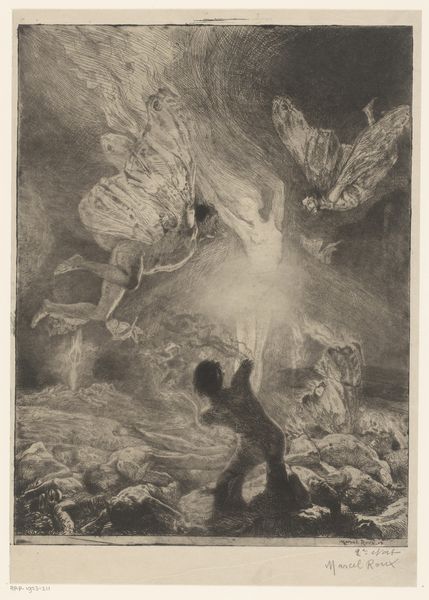
painting, oil-paint
#
baroque
#
dutch-golden-age
#
painting
#
oil-paint
#
landscape
#
painted
#
figuration
#
oil painting
Dimensions: height 144 cm, width 171 cm
Copyright: Rijks Museum: Open Domain
Curator: Jan Asselijn's, "The Threatened Swan", likely painted around 1650. Look at the dramatic pose of the swan, wings spread wide in a defensive posture. Editor: My first thought is that this feels surprisingly modern in its raw energy. There's something unsettling in the dynamic lines of the swan's body against that slightly subdued landscape. Curator: Indeed. Asselijn was part of a generation grappling with the end of the Golden Age in the Netherlands, with encroaching political conflicts. Many see the swan as an allegory for the Dutch resistance against foreign invaders, the defiant bird protecting its nest as the Dutch were attempting to protect their burgeoning Republic. Editor: I'm captivated by the contrast between the almost sculptural solidity of the swan and the looser brushwork in the background. The intense white plumage against the browns and greens; it's visually striking. How does that contrast amplify your interpretation? Curator: Well, that contrast serves to highlight the swan's vulnerability, and thus, the vulnerability of the Dutch Republic. It suggests a tension between the idealized vision of a peaceful nation and the reality of constant threat. It’s as if Asselijn is questioning the very concept of national identity during the mid-17th Century. The swan is protecting its nest from what, precisely? Are the feathers around the nest signifiers of battle and of potential or actual loss? Editor: The diagonal composition of the body really enhances this sense of tension, of potential disruption. The limited palette seems deliberate, focusing our attention on texture and form, amplifying that allegorical significance. It feels like a visual argument, presented with controlled intensity. Curator: Precisely. In many ways Asselijn utilizes symbolism to not just comment, but rather activate his viewers into recognizing their role as agents for maintaining power dynamics and social structures of the time. The very survival of this image asks us to be active in the discussion even centuries later. Editor: Yes, that sense of active looking, of almost demanding the viewers engagement is there for sure. It encourages the viewer to make their own symbolic conclusions about the situation. It makes me consider how artistic expression transcends its time. Curator: A valuable insight. Editor: Definitely, Jan Asselijn's artwork prompts such reflection and invites deeper examination of both its immediate artistry and the layers of history that envelop it.
Comments
rijksmuseum about 2 years ago
⋮
A swan fiercely defends its nest against a dog. In later centuries this scuffle was interpreted as a political allegory: the white swan was thought to symbolize the Dutch statesman Johan de Witt (assassinated in 1672) protecting the country from its enemies. This was the meaning attached to the painting when it became the very first acquisition to enter the Nationale Kunstgalerij (the forerunner of the Rijksmuseum) in 1880.
Join the conversation
Join millions of artists and users on Artera today and experience the ultimate creative platform.
